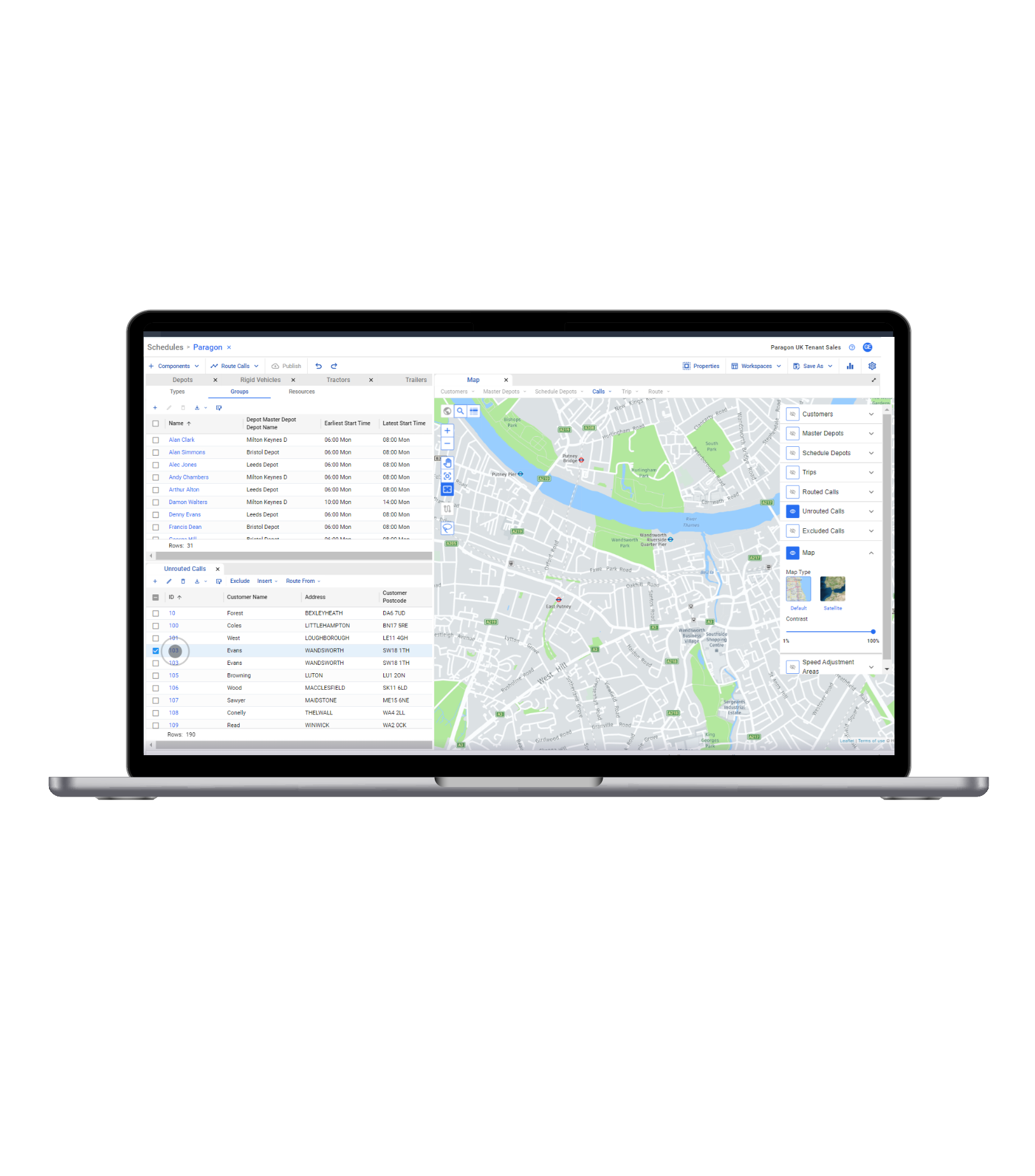Ask More What-If Questions To Reduce Fleet Operating Costs
Ask More What-If Questions To Reduce Fleet Operating Costs
Ask More What-If Questions To Reduce Fleet Operating Costs
24 Sep 2020
 Aptean Staff Writer
Aptean Staff Writer 
When you’re managing a fleet, you’re under constant pressure to find answers to management’s questions, such as:
How can we improve on-time delivery?
How can we better utilize our existing trucks and drivers?
How can we reduce fleet operating costs?
Your most powerful response might actually be a question of your own. And your most powerful tool to answer that question could be your fleet routing software.
The Power of “What If…?”
Distribution operations have a similar daily cadence. Orders come in. Transport planners determine the most efficient routes and driver assignments. The warehouse scrambles to pick orders and load trucks according to plan. Dispatchers hustle to get drivers out the door and onto their routes. Finally, your team monitors delivery progress to address problems and keep customers informed.
Tomorrow It’s Just Rinse and Repeat.
There’s precious little time to step away from the daily tactical grind to think about the big picture, and ask strategic questions that have a profound impact on your business — not just in terms of reducing fleet costs, but on improving operations to create a sustainable competitive advantage, too.
Advanced tools, like our industry-specific routing and scheduling software, Aptean Routing & Scheduling, have the ability to answer such strategic what-if questions as part of a modeling exercise. Some examples:
What if we added a new distribution center?
What if we changed the type of delivery vehicles we used?
What if we moved back order cut-off times?
What if we changed from six-day-a-week deliveries to a five-day schedule?
Depending on the size of your fleet, the answers to these questions could easily equate to six- or seven-figure savings opportunities.
The mundane questions will never go away for distribution businesses. But distributors in search of breakthrough performance improvements must make time to explore difference-making ideas. And for that there are tools to help.
Your Secret Weapon to Reduce Fleet Operating Costs
If you use basic routing software, you likely lack the capability to inform your distribution strategy. Advanced route planning and scheduling software gives you the business modeling tools you need.
Here’s How It Works.
Fleet routing software holds a huge repository of data — on your operation (customer delivery requirements, stop times by customer, truck size and capacity, product weight and dimensions, etc.) and on road travel (average road speeds, low bridges, traffic details, etc.). A what-if analysis takes all this data and applies it to whichever set of theoretical changes you choose to explore, such as vehicle size or warehouse location.
The output is a highly accurate assessment of the cost and service-level differences between what is and what could be if the strategy was implemented. And the answer can be obtained without having to go through a trial or spending a dime.
Take, for example, the distributor that was servicing a large section of the Midwest from one Chicago distribution center. After doing a what-if modeling exercise, the company found that by adding satellite DCs in Cincinnati and St. Louis it could reduce fleet miles 57% and drive time 38%. This equated to a potential annual saving of $1.5 million in combined fleet cost and driver salaries. Here is the routing software’s visual illustration of how the routes would change.

In another example, Southeastern Food Merchandisers wanted to reduce its fleet operating costs. It leveraged its software’s strategic analysis capabilities to assess the impact of replacing some of its semi-trailers with lower-cost straight trucks.
“We learned from the software that it was much more economical to introduce some smaller trucks and run multiple shifts,” said the company’s director of operations.
Pizza Wholesale, a large food distributor, uses its software to gain internal buy-in for automating route planning in new districts where routes are planned manually.
“When we go into a district and propose a change in how route planning is done, we now have objective data that can tell them how much the change will save us in fuel, manpower and trucks,” said the company’s fleet coordinator.
Why Aren’t More Distribution Businesses Asking What-If Questions?
Many fleet operators continue to plan delivery routes manually, or use rudimentary tools such as spreadsheets. Others get by with basic routing software that can generate a daily route plan, but not much else. Without the built-in modeling tools of more advanced routing software, big ideas about changes to the distribution network are often left unexplored. That’s because it would involve hours and hours of number crunching. Most distribution businesses simply can’t afford the luxury of redeploying their key transport operators to such time-consuming strategic tasks.
This barrier disappears if your fleet routing software has business modeling functionality. Once you enter a new set of variables, the analysis itself takes just minutes.
Many fleet managers that have the tools for business modeling may not even know it, much like smartphone users who are unaware they can undo text they just typed by shaking the phone. They tend to use routing and scheduling software only for tasks that the name implies — routing and scheduling of delivery trucks.
But by learning about and leveraging the software’s analysis capabilities, these same fleet managers can reposition themselves from functional transport managers to agents of change. They can bring a level of thinking that higher-ups — even the top boss — will appreciate.
Fleet Routing Software: Alexa for Distribution Questions
The route optimization software industry is not quite there in terms of offering immediate voice search responses, like Amazon’s Alexa, to strategic distribution questions.
But We’re Not Far Off.
The right fleet routing software can access an incredibly powerful repository of data on your own transportation operation and every permutation of travel route possible. You can leverage this data to explore new strategies. All it takes to test your hypotheses is to frame your strategic questions and enter in new variables.
Even without exploiting a business modeling capability, routing software can reduce fleet operating costs 10–30% and deliver an ROI within 3–12 months. But with modeling tools, the benefits could shift quickly from merely incremental to transformative.
Don't take our word for it. Read the following success stories from actual customers:
Dreams Enables 12,000 Home Deliveries a Week with Aptean Home Delivery
Martin Brower Keeps the Burgers Rolling in the USA with Aptean Routing & Scheduling
Aptean Routing & Scheduling Software Helps Tesco Cut Carbon Emissions
So, the next time you’re asked for answers on how to reduce fleet costs, respond with a question. Look to the horizon and ask “what if…?” Just make sure you have the right tools in place to provide the answer.
Contact us today, to learn more about how business modeling can transform your distribution operations.
Heb je de productrondleiding geprobeerd en ben je klaar om in de versnelling te komen?
Boek vandaag nog uw volledige demo met ons team om te zien hoe onze geavanceerde routeringssoftware u kan helpen de prestaties te versnellen.



